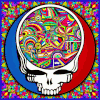Search the Community
Showing results for 'transformation'.
Found 2,474 results
-
Alchemist (Wizard, Magician, Scientist, Inventor–also Visionary) These archetypes share the common trait of converting some form of matter into an altered expression of itself. The Wizard and Magician produce results outside the ordinary rules of life, whether causing people to fall in love or objects to disappear. Whereas a Wizard is associated with supernatural powers, the Magician tends to be seen more as an entertainer. The Alchemist is associated with vain attempts to turn base metals into gold, but in its highest manifestation it seeks complete spiritual transformation. You may identify with this archetype if you are interested in a path of spiritual development that is aligned to the mystery schools or study of the laws of the universe. From this perspective, Nostradamus and Isaac Newton could both be classified as Alchemists. The shadow sides of these archetypes are found in the misuse of the power and knowledge that comes through them. Seduction and trickery brought about through magic and wizardry play on the desires of many people to transform their lives. For the Alchemist or Wizard to be one of your circle of twelve, it needs to be associated with your physical life in some significant way. Perhaps your work or living situation demands that you be especially inventive or interventionist on a regular basis. The shadow Wizard manifests either as the use of ingenuity for criminal or unethical purposes or as feelings of superiority based on high intellect.
-

BipolarGrowth replied to Aaron p's topic in Spirituality, Consciousness, Awakening, Mysticism, Meditation, God
I also wanted to say that I’ve experienced the complete transformation of my physical body into a cephalopod body and spoke in tongues for 5 hours straight on one of my 5 dried gram mushroom trips. He’s right about that, but I think it’s unrelated to the Holy Spirit mostly. I’ve never felt the Holy Spirit during a trip, but ayahuasca made it possible for me to experience the Holy Spirit to levels like never before. This happen after the trips though, not during. -
Aries - Mars Taurus - Venus Gemini - Mercury Cancer - Moon Leo - Sun Virgo - Mercury Libra - Venus Scorpio - pluto Sagittarius - Jupiter Capricorn - Saturn Aquarius - uranus Pisces - neptune Aries (March 21 – April 19) Aries is ruled by Mars. Mars is the God of War and the planet of action and courage. Aries have a determination and drive that is backed by fire and courage, making you the first to take on a challenge and lead others to victory. Taurus (April 20 – May 20) Taurus is ruled by Venus. Venus is the planet of love and money, and for a Taurus those are #1 and #2 on the list of desires to feel stable and inspired. Taurus is a lover of all things pleasurable, soft, luscious, luxurious, and expensive. That’s all Venus talking. Gemini (May 21 – June 20) Gemini is ruled by Mercury. Mercury is the planet of communication and Gemini loves to talk and share thoughts, ideas, mysteries, and philosophy. Mercury also rules consciousness, nonverbal communication, and technology. Cancer (June 21 – July 22) Cancer is ruled by the moon. The moon is representative of our emotions, the feminine, water, the darkness that lives within us all (dark side of the moon), and of the phases we all naturally go through. Cancers are natural-born feelers who are incredibly in touch with their emotions, which can be very intense at times. Leo (July 23 – August 22) Leo is ruled by the sun. The sun is the center of our galaxy, and Leo loves to be the brilliant and shining center of attention. The sun rules our will, ego, and self-expression, and Leo is a master of all three. With a heavy focus on the self, Leo is the most self-involved sign, but also a selfless giver and passionate lover. Virgo (August 23 – September 22) Virgo is ruled by Mercury. While Mercury also rules Gemini, it has a same-same-but-different expression in this earth sign. Virgo is the problem solver, scheduler, logical, and most responsible sign in the zodiac. Mercury is very productive in the sign of Virgo, and the ease of communication is expressed in a very linear way full of reason. Libra (September 23 – October 22) Libra is ruled by Venus. Again, we have another planet share happening here with a completely different expression from Taurus (also ruled by Venus). Libra is an air sign and is deeply committed to balance and partnership. The sensuality of Venus is expressed by Libra through partnership, design, lasting friendships, and charisma. Scorpio (October 23 – November 21) Scorpio is ruled by Pluto. Pluto represents deep transformation, and has long been associated with the underworld, the subconscious, death, and the afterlife. Scorpio has no fear of emotional depth or the darkness that lives within. In fact, they are most comfortable in these places that others rarely venture to or even acknowledge. Sagittarius (November 22 – December 21) Sagittarius is ruled by Jupiter. Jupiter is the archetype of expansion and growth, making Sagittarius lovers of travel, adventure, personal-development, and spontaneity. Luck and good fortune are also associated with Jupiter, and Sagittarius has an infectious positive energy. Capricorn (December 22 – January 19) Capricorn is ruled by Saturn. Saturn is the planet of responsibility, hard work, determination, and discipline. While this may not sound like the most exciting collection of adjectives and traits, Capricorn knows how to work hard and play hard. The integrity and lack of illusion in Capricorn is the fingerprint of Saturn. Aquarius (January 20 – February 18) Aquarius is ruled by Uranus. Uranus is the rebel, the revolutionary, and the planet of originality, innovation, and expanded consciousness. Aquarius has an urge to live against the grain, speak up, get involved in activism, and be a revolutionary thought leader. Pisces (February 19 – March 20) Pisces is ruled by Neptune. Neptune is the planet of psychic awareness and the God of the Seas. The watery, psychic, mystic, and magical soul of Pisces is the oldest in the zodiac and representative of dreams, imagination, spirituality, and wonderment. Reality is not so appealing to Pisces as idealism takes the lead.
-
This has all actualized itself perfectly for me (intersections of time coalescing into one well timed insight for radical transformation). Note to self: Remember to sign post this using the method of loci, utilise this as a tie into mapping consciousness now for now what I realise to be best production (there's nothing else). Patterns over answers, actions based on best patterns relative to mapping in the moment (designed to connect to former mapping). Recursive feedback loop. Release ideals but work towards increasingly refined sculpted versions of them them. Context for consolidation - as a part or just colour to add to the sign posting noted above: "... I just don't want to be like my father (i.e. unable to properly update his memories in the present moment about his perceptions of others - that's one of his difficulties, especially as he's gotten older. I'd like to really look after my mind throughout my life to avoid that). That's one of my goals. Reveals the importance of me poking holes in my own awareness and what I believe in the context of the present moment. I guess I could say the same about my mother, but their difficulties merge in different ways, thus still could to use them both as a compass of what I'd like to avoid. It's all just patterns and adaptation, the rest is history in the end on how to work those patterns better. And I realise only just now that that's really the only war that exists for me, getting those patterns right. Everything else is just noise. For me its just about my own awareness, but there are no restrictions. It's just about my own awareness. And as for my parents. For all people including myself there's things I'd like to learn and things I'd like to not learn/unlearn you know, so they've obviously got some positive traits as well, its really just about the whole picture and how all those patterns fit together."
-
Practice for inhabiting the body with I am and cultivating 3 Centered awareness These are some instructions I got from a Fourth way Course about 4 years ago.Doing this correctly over time helps one to distinguish the difference between sensing and feeling. Become aware of the natural flow of your breathing for a few breaths, noting the sensation or presence of the physical body as the air comes in and goes out. Relax the body as you breathe out. Let a feeling of gratitude or wonder arise. Relax into a feeling of gratitude or wonder for life or for whatever you may feel gratitude for. Do this for a few more breathes. For the next few breaths, say inwardly “I”, as you inhale, breathing with the intention of taking in finer energies or substances in the air and feeling a connection to Higher help. When you breathe out say inwardly “AM”, with an awareness of your whole body physical presence. The exercise itself is a form of self-remembering — returning from “all these other things” back to myself. Its aim is to practice three-centered awareness — observing (seeing), sensing, feeling. Engaging all three centers and having a sense of whole body awareness is essential. Activating gratitude, wonder, our being, or our own inner poverty and need for higher help — all are good catalysts for self-remembering. The inner exercise should only take a minute or two (or less) once familiar with the steps. After you get used to doing it, start feeling from the heart with the in breath and saying I And then sensing the body with the exhale while saying am, silent or inwardly. I recommend the book Silence by Robert Sardello for those who take this up as a practice or for anyone who has tasted any true appreciation for solitude and silence. This is a book which will take one deeper into that territory. Some relevant quotes from the Ridhwan school glossary- Grounding Awareness in Bodily Experience is Important Inner support implies that we need to be in touch with our experience. Inquiry is not a mental exercise, disconnected from ordinary reality. We have to be rooted in our everyday personal experience and in touch with our own thoughts, feelings, body, and behavior. Inquiry does not require us to leave our body or try to reach unusual transcended heights of perception—and we will not feel our inner support by doing so. Instead, we need to become more concrete, more down to earth, by delving into our own everyday experience. It is the embodied soul that is the entry to all the treasures of Being. When you are inquiring, it is important to keep sensing your body—to stay in direct touch with its movements and sensations. This includes the numbness, the dullness, or the tensions you may feel. To ground your awareness in your bodily experience is important because your essential qualities are going to arise in the same place where you experience your feelings, emotions, and reactions. They are not going to appear above your head, they are going to arise within you. So your body is actually your entry into the mystery. Spacecruiser Inquiry, pg. 294 Our Heart Produces One Feeling – Love- and From that, All Its Derivatives We can say that the basic feeling of the soul is love. This means that all other feelings, all other emotions of the heart, are derivatives of this basic feeling of love. They are reverberations of love, reflections of love, and sometimes distortions of love. They are reflections on reflections on reflections on reflections of love. So our heart produces one feeling—love—and from that, all its derivatives. That is why, if we want to remain connected with the energy of love, we need to allow ourselves to experience all of our emotions, whatever the feelings are that arise in us. We cannot experience love without experiencing our other feelings as well. And because all of those feelings are derivatives of love, if we close ourselves to those feelings we will close ourselves to love. Love Unveiled, pg. 55 Mixing Our Consciousness with Our Experience The nature of the soul is such that when a feeling arises, we can experience that feeling from within the feeling itself. We can intimately mix our consciousness with the specifics of our experience and recognize directly what the experience is. This is the ground of knowingness, which is direct knowing, and it is necessary in the process of understanding. Without this kind of knowingness, this gnosis, there is no possibility of real understanding; understanding remains only a mental operation, which is good for mathematics but is not enough for spiritual transformation. Spacecruiser Inquiry, pg. 333 Feeling Free from the Conceptualizing Mind But what is feeling free from the conceptualizing mind? If we suspend our conceptualizing minds for a moment, we realize that the only thing we know for sure about our inner experience is that sensations arise. If, for a moment, we do not use the mind and do not say this sensation is anger or hurt or fear, if we just forget about these names for a while, we will have the chance to see what “annihilate mind in heart” means. To see what heart without mind is, we need to be willing to let go of our sense of being an entity. When we do that and simply look at our feelings, what we actually experience is nothing but sensations. The conceptualizing mind singles out certain intense sensations and labels them as various emotions. This is the ordinary way our experience happens, and there is nothing wrong with it. This is how human beings have always operated, what we have always known. However, if we want to meet the guest, if we want to leave the realm of the day and have a glimpse of the true night, we need to go beyond this normal experience of things. We need to see the mental quality of what we call our feelings and emotions, and allow ourselves to suspend the conceptualizing mind that distinguishes and labels them. Diamond Heart Book Five, pg. 161
-

deci belle replied to deci belle's topic in Spirituality, Consciousness, Awakening, Mysticism, Meditation, God
ahhahahhahaaa!! We doo all right, you should know I taught Conan all he knows, monsieur~ heehee!! Yes, Breakingthewall, you should also already know that it was a woman who taught Huang Di (Yellow Emperor) the art of strategy. It was only much later that Sun Tzu codified the martial lore in extent due to the 500 Years War that was ravaging China between the moribund later Zhou dynasty and the meteoric and extremely short-lived Xin dynasty. I don't want to rile anybody's feathers by omitting the former and latter Han which book-ended the Xin by a couple hundred years preceding and following the Xin's 20 or so year reign. At any rate, Conan is an old friend~ after all, he did come from the west, did he not? I want to summarize below, the former discussion points in hopes of possibly delving further into the application of enlightening activity by virtue of the knowledge of potential inherently comprising the essence of reality as practiced by spiritual adepts of all authentic teaching. As expressed in the provisional teachings of individual liberation, the term illusion is relative to the sphere of psychological function in each individual. In terms of taoist Complete Reality (Quanzhen), Chan/Zen and Mahayana (Mind Only) buddhist teaching, illusion refers to the entire realm of creation, the created, karmic process and the incremental, (time), without limit, including the psychological function of all sentient beings (actually, we really shouldn't leave out insentient beings as described by Don Juan Matus of the Toltec Nahual shamanic teaching tradition). As well, without reservation, all buddhas, wizards, saints, sages and all prior illuminates also comprise the extent examples of delusional existence— not just ordinary ignoramuses. Thus, in both provisional and authentic teaching, illusion is another name for temporal existence and denotes that which is bound to karmic rounds of birth and death continuously throughout lifetimes as a direct result of ignorance of the being's enlightened real essence. As for the Absolute (unlimited) range of human experience as tendered by the nonoriginated (nonpsychological) spiritually perceptive capacity, it does have a limit, nevertheless, in terms of the unknowable. Also, the absolute does not "produce" manifestation of karmic evolutionary process. The only reason higher teachings refer to creation as "illusion" is that its created aspect is void of an absolute nature based on itself. The mystery of mysteries is that the essence of absolute (nonorigination) and creative (karmic evolution) is undifferentiated unified awareness. They are the same in essence, therefore spiritual adepts manipulate this homogeneity to arrive at the secret operation of the Celestial Mechanism to transcend creation's killing energy and instead, gather its unrefined potential for the purpose of further self-refining activity in the midst of everyday ordinary delusional situations without admitting intellectualism. Therefore, creation has no need of some far-off creator or creatrix because it simply isn't necessary to believe in supreme being. What authentic teaching espouses is that one experience supreme natural being for oneself and realize one's a priori selfless identity as inherent nonoriginated selfless awareness. This is as far as a person (in terms of selfless potential) can go. The ultimate reality of human being is nonoriginated selfless awareness. It's just the way it is and no one knows why. The topic of this thread is the essence of reality which is posited as neither manifest nor un-manifest, neither stillness nor movement, neither self nor other, and pertains to inconceivable entry into reality rendered by the uncreated essence of human awareness, which does not depend on sudden illumination. Why? Because nothing whatsoever is gained by the experience of complete, perfect enlightenment. It is already one's true nature. Rather, the selfless event of spontaneous enlightening experience is the direct and cumulative result of authentic enlightening activity by virtue of awakening to (recognition of) one's inherent enlightening capacity. One's inherent enlightening function is in seeing potential and responding impersonally to situational evolution without relying on self-reifying karmic pattern-awareness. Potential is inherent in the situation, not the person. For those who see Suchness, or the essence of complete reality, in terms of everyday ordinary existence, arrival is not really a matter of stages, or personal developmental leaps and bounds toward brilliance in the manifestation of "spiritual powers". It is simply a matter of diligence, excellence, humility, patience and selfless open and clear intent based on a sense of selfless wonder and acceptance of one's inherent goodness. The end-point of all authentic teaching is in the actual application of enlightening experience in terms of everyday ordinary situations, unbeknownst to anyone. It is necessarily my task to divulge the celestial properties of inherent real knowledge in the application of potential by virtue of delusional existence. Why is it possible to do so? Endless spiritual transformation along with creation without following karmic bondage in rounds of birth and death is possible only because illusion and reality are not different in terms of their essence. But it is necessary to work with essence directly, without intermediary, in order to transcend karma while intimately in its midst. It is by virtue of the false that the true is manifest and absorbed. The firing process as described in taoist spiritual alchemy is the process of recognition, absorption and further selfless refinement of the creative's unrefined potential. It is naturally refined in the immaterial body of awareness, which has no location. That's a fancy way to say "you" don't do it. "You" don't recognize it. "You" don't absorb it. "You" don't seal it away in the empty vessel of nonpsychological awareness. And "you" don't "pass through" transcendent experience in its aftermath. For now, this is enough. ed note: add last line -

deci belle replied to deci belle's topic in Spirituality, Consciousness, Awakening, Mysticism, Meditation, God
Oh, ok, Breakingthewall— so upon return via seamless transformation, the psychological apparatus' quality of discriminatory consciousness has manifest as such …in terms of self-reifying terror (Yow!!), among other aspects of ordinary awareness solidifying the formal personality upon re-entry into conceivability). I don't cotton to "students" per se. It's just my predilection to operate in such a fashion; I just write about what I know in anonymity, relying on the integrity of dedication to sincere and deep study of the ancient classics of all authentic teaching by students of all abilities. My relationship to others sharing this affinity parallels my life-long profession in alpinism, in terms of my client relationships. I haven't had the benefit of a true partner in terms of climbing or glissé alpinism for what seems a lifetime. My undiminished passion for alpinism is still intact and I do have the benefit of a very high-quality client roster— mostly for above tree-line endeavor. I appreciate your sensitivity, Awayfarer~ I don't see a problem with publishing the post here on this forum. Since you found its relevance useful in the context of this thread, others sharing your resonance may feel likewise. Oops~ I failed to respond about the reference to a hexagram (ref: the wild west), Awayfarer. No, but there should be!! I was only making a sassy euphemism fit the context of negotiating realms beyond convention (but not the absolute). Now that's a path for which Breakingthewall may very well have the predilection (and a teacher) to do so. I do not. Complete Reality seems to be real enough for me. Even though I did camera for 25 years, I have had very little motivation to render my aesthetic vision or even partake of the medium in terms of the moving image. I don't watch movies at all~ and never did, simply because life is plenty real enough for me (the way I live it). Well, ok~ I own a copy of Orfeu Negro (Black Orpheus, 1959), only because my guitar teacher turned me on to its sound-track, which is is the planetary epicenter of the Bossa Nova musical genre, with which I am joined at the hip❤︎❤︎❤︎!! I used to sing and play all those tunes in the Portuguese on solo classical guitar for 15 years, during which time I totally burnt out on playing it. Since then, I have been a student of rock and roll since 2005. I'm getting the hang of it playing Cramps, Brian Setzer, Stones and classic Sun Studios recordings. ed note: add last paragraph -

ivankiss replied to ivankiss's topic in Spirituality, Consciousness, Awakening, Mysticism, Meditation, God
@Visionary Thank you. I myself am quite familiar with hell. One could say I'm venturing into it quite often these days. For the purposes of releasing some trauma and reaching a deeper understanding of my shadow. Not pleasant at all haha. But it's relevant, I imagine. Death is necessary and only natural. Still; I struggle to make peace with it. It seems to me that that's simply a part of the whole process of transformation. It's uncomfortable. And sometimes very painful and terrifying. It's life. Much love. @seeking_brilliance I'm not dying so easily ?❤ -
Where would you map these Archetypes on the Spiral Dynamics model? I would say: Worrior is at Red and Orange Lover is at Blue and Green Magician is at Green/Yellow/Turquoise King is at Yellow/Turquoise I plan to structure my Instagram account with these 2 concepts where I will teach through them. I plan to have different costumes, symbols, and colors on my videos etc. For example: Video about Discipline: I will teach it through Orange and Worrior Video about Meditation: I will teach it through King. So in this case King is combination of Worrior and Lover (Orange and Green) . I want to convince orange to meditate by telling them how it will increase their productivity, discipline and words that appeal to orange and then finish up with green mix where all this outward success is all about love and connection (in an orange sort of way) . Video about Patience: I will teach it thorough King ( Let me just note that I will not limit myself with this concepts, I will structure my acc so I could do and be who ever I want) . So because I will hit Orange hard in the begging (I want to integrate it) , the video about Patience (King) will communicate that even though we need massive action , we also need space for love, for relaxation, because you are more productive this way(in this case, man is stuck in masculine energy) etc. And if you can't relax, and you are in your head all the time then it means you have problems with feminine energy, and you will learn about it through Lover archetype etc... I will post a video that I shut half a year ago when I started experimenting with this idea, just for you to get a sense of what Im talking about (it is way better now hue hue). People in my city still think that Im crazy LOL (their criticism made me grow so much) It is about toxic Red/Blue. I shoot another video where I explained Red entering Blue. In 0;56 I speak in English It is a line from Pulp Fiction hehe I will mix in music, photography, film, acting etc. on my Instagram also. It will be short entertaining videos, especially The Magician Archetype hehe ! (I designed Integration map for myself...Bravo Eddie, how cleaver!) Here is my Instagram if you want to follow the amazing transformation (realizng LP) and what I will achieve in one year : https://www.instagram.com/alhemija21veka/ Stage Orange Picture: https://www.instagram.com/p/CGVf8wblp8I/ What do you guys think about all this above? Do you have any ideas that you want to share? This is kinda separate from the post above, but, what do you think about this perspective? Until two years ago I had no education whatsoever.I was walking through life with all sorts of addictions like : video games, alcohol, porn, weed and many more etc. And this way of living (which was led by traumas and toxic culture)made me to the point of big depression and contemplating suicide. This suffering and closedmindedness triggered a full circle. I became radically openminded. This is why Im everywhere on the spiral right now in just two years. So I have two ideas here: 1. Most of the people who are "educated" (Blue/Orange) in Serbia are very closed minded because: they already think they know if they are questioned about their beliefs from above which is rare ( Healthy Orange , Green) they lash out if they are questioned about their beliefs from below, they have already made up answer that reinforces their beliefs when they "win" the argument etc 2. But people who are uneducated, and are ready to get out of the rut (like me in a way).They will be radically open minded because the things they will learn will generate results they didn't have their whole life ( basic orange stuff ), just like I discovered self-help. It was new world for me. And in my case my traumas didn't heal until I started Shadow-Work, but my traumas forced me to work on myself, and when I found out that money and aprrovel(im generalizing) doesn't heal me I was forced into Green and Yellow, which would not be possible if I didn't had that trauma and haven't find Leo. So my point here is: Uneducated traumatized 25 year old will have more potential for selfacutalization then "educated"(some sort of degree) 25 year old. Does that make any sense? It is generalization I know, but my old friends that are stuck in the rut, are now becoming more openminded(because of my example) and willing to learn then my orange friends who have good jobs, cars, way healthier life style they will believe me (not everyone of-course...most of them will not, most of them will demonize me... Im talking about potential selfactualizesers) and do the work Traumas are big motivators for growth if you survive the crash in the first place For example now ! I still have problems with Fe - Ti loop . And this trauma of what people will think about what I typed in this post forces me to explore other people perscpectives, which means... to explore myself. You see?
-
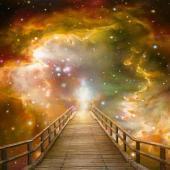
Salvijus replied to Leo Gura's topic in Spirituality, Consciousness, Awakening, Mysticism, Meditation, God
It is the initiation that is important not the instructions. It's more like baptism or consecration. It's a very sacred process that can change your life in ways you have not imagined. Without initiation maybe your lung capacity will increase, but transformation will not happen. This video might be worth watching to understand a few things about life. Stay Well ? -
I used to do DDP yoga some years ago. It's good for overall fitness; works on strength, endurance and flexibility - all at the same time. Search for Arthur's transformation through DDP yoga. It's quite inspirational.
-
How do you see the beauty in: Failure, Success, Low Ego Development, High Ego Development, Confusion, Pain, Arrangement, Repetition, Lack of Care, Intense Care, Great situations, Horrible Situations, Rejection, Loss, Spontaneity, Precision, Reliability, Unreliable, Optimization, Love, Hate, Evil, Forgetfulness, Death, Birth, Forever, Sameness, Annoyance, Arrogance, Complexity, Hopelessness, Softness, Structure, Symmetry/Asymmetry, Color, Combination, Transformation, Equality, Rules, Domination/Suppression What is your relationship to beauty? What is beauty to you? What distinguishes beauty from lack of beauty or is it the same thing?
-
Money is a typical personal stage development. Money is the primary means of structuring the crystallized ego into a coherent social structure. At the transpersonal stage money is transcended since the fluid ego interacts without needing rigid structures such as money and laws. However, there is a transcend and include of things like money and laws. It's impossible to jump from say bartering in ancient times and lawlessness directly into the transpersonal stage. First society needs to be developed enough to form a scaffolding that supports the emergence of the transpersonal stage and that includes things like money, laws and calendar time. My own guess is that we will still have to deal with money for at least two decades from today. Ray Kurzweil has predicted a technological singularity happening around the year 2045. That's an incredible transformation of society which undoubtedly, if it happens, will lead to a transcend (and include) of money. Money can still be transcended today by using money as a tool instead of clinging onto it as the crystallized ego does. So a fluid ego and the use of money are compatible.
-
Aaron Abke talks in this new video about how the mind has evolved to always assume the worst as a strategy for survival. When we always assume the worst, when we always take the most pessimistic view, then we are most likely to avoid danger, Aaron said. Good point. That made me think that a sign of a collective consciousness is that all fear drops away when interacting with other people. Because then those other people are a part of one's own being. So it's a total transformation of that ancient fear-based survival strategy of always expecting dangers, which is what we still have at the personal stage.
-
@egoeimai Don’t be addicted to dumb shit and most of your problems will simply fade away. You don’t realise that you’re positively reinforcing an addiction you didn’t realise you even had, programmed by a screen ? and social networks paid for by news media, film and governmental influences to keep you at a lower state of consciousness. You... Are already free. It feels unnatural to begin with to start reinforcing biochemical feedback loops within yourself that facilitate a higher state of consciousness. But. This. Is. Just. How. It. Is. You’re not going to fool anyone aware here. You don’t deserve sympathy right now because you’re not showing yourself enough empathy, you’re simply looking for attention. When you begin to show yourself some empathy, then you can begin to act with self respect, an intention that you can incrementally leverage to higher states of awareness. This is when we can begin to truly converse on this thread, until then, you’ll be locked in your addiction to fear. It’s an untold lie, that fear was anything more than this, an evolutionary response (survival purposes serves as necessary) and memories with this kind of cellular information that still need to be transmuted. Truth. Love. Freedom. Does this addiction truly serve my transformation towards higher being or does it not? That’s the only relevant question for you on the subject of addiction.
-
2020: the empire strikes back year. Welp, here we are in 2021. Another year; another benchmark to shame ourselves into buying a gym membership for a month. So 2020 was a shitstorm. The pandemic really did a number on all of us, some more than others. And I don't want to sugarcoat by saying how great of a spiritual opportunity this was to let go of what doesn't serve us anymore and blahbity blahbity blah... Most of us aren't even at that point yet. I'd say most of us are at the point of saying "mercy." I'm there, to be honest. This has been a year of deep psychological excavation; of coming up against huge financial, relational, and emotional hurdles; of testing how well I can fare when I have almost zero emotional resources — when it feels like the darkness won. It's The Empire Strikes Back year. It's not just COVID for me. I have a couple acquaintances who are into astrology, and they say that these next few years of my life (27-31) are "Saturn's return," which signifies a major transition into adulthood. Friends will be lost, moves will be made, and generally speaking, a major transformation is under way. I resonate with that because based on the events of this past year, it's already happening. On the first day of 2020, I moved into the Artist's Den and tried living alone for a second time. The place had a back yard, a kitchen, a dining room, a living room, a foyer, furnace heating, and other amenities that were luxurious to me. I could play guitar at three in the morning with no noise complaints, walk around butt naked, and have access to the kitchen whenever I wanted. But when my girlfriend at the time wasn't there, I was lonely as fuck. I realized through direct experience that no amount of luxury can compensate for nourishing human connections with wholesome people. Speaking of wholesome people, the dance with my ex was chaotic. We both had our stuff, projected onto each other, triggered each other constantly — yet we kept coming back to each other to try to do "the work" in a break-up/reunion cycle. She quarantined with me and my family after I canceled the lease on the Artist's Den in March, which resulted in the most turbulent, exciting, miserable, and amazing months of the year. I give her a lot of credit for going through that with me. As tumultuous as it was sometimes, I learned so much about myself in that relationship. I also feel truly honored to have had a soul connection with such a lovely, wise, beautiful and kind human being. She touched my heart in ways I didn't anticipate. The restaurants in my area were still open, so I did a lot of gigging in the summer, improving my chops a ton. Fall and winter has been in the parents' basement, caretaking a sobbing inner child with my inner strength. After the (presumably) final break-up last month, I had one session with my therapist before she found out that her husband was diagnosed with terminal cancer and had to cancel our future sessions. I haven't seen her since. In the midst of all of this, I've lost touch with several people who I used to call "friends." So... a breakup, losing friends, a therapist leaving, being around a family that doesn't understand the grieving process, being shamed for being depressed and mopey... It's been rough. Outdated ways of relating to people have come to the surface to be released, with grief as unrelenting as a river current. Dreams about fame and success that I thought were my own were merely narcissistic childhood mirages. I've become so disillusioned with horse-whip self-help. I am so sick and tired of being picked on or called "selfish" for going after what genuinely feels safe and nourishing to me. And I'm starting to own and caretake my shadow — the lazy, passionate, exploratory, brash, horny asshole. So while it is rough, it's not all bad. Through this hardship, I've learned about surrender and real self-love. Not just the question I posed last year — "What would someone who loves themselves do?" But a better question in my opinion: "What do I need in this moment to feel safe?" Because we can only make more empowered choices when we feel safe enough to do so. We can only change once we — all the parts of ourselves, including our shadow — feel safe, accepted, seen, heard, validated. My new year's resolution is not to get bigger muscles, a better job, or one hour of daily meditation. It's to commit to inner safety.
-
The beginning to the end of existence and all of what it is outside of that story. This is all a choice I know it, I’ve tested it. Choice is a manifestation of the way the universe transforms itself, choicelessness is to the experience of our subjectivity from an intersubjective perspective of larger existence where we are in allowance for inevitably to play itself out, we can opt in or we can opt out by the relative measurement of mind. I have choice. I choose you. But for you, black panther of great mythologies, I want you to make sure you always choose you. Everything after that is your choice. May this first day of the year be the beginning of the next stage of your unity with yourself, and through that, all nebula, the universe and all of your past and future lives that now live among the stars forming to create the new milky-way of this great new year that next year will live in the stars that make the beautiful synapses of your mind. Connection to yourself is your revolution and interconnection ours. Let’s write Shakespearean versus, both the meaningless and carefree, “to be or not” said the overly tight pants wearing dramatic actor, to the meaningful and heartfelt, “My love as deep; the more I give to thee, The more I have, for both are infinite”, Romeo and Juliet; Shakespeare. Two roads diverged in a wood, and we are taking the one less traveled as Robert Frost may say, and able to risk it all on one turn of pitch and toss, and lose and start against our beginnings, we’ll be unified always to our true selves, as Rudyard Kipling might say. Today, you live today for you, in the way you truly wish, and the universe will open up to you in ways you can’t imagine, and you to it, for both our betterment and transformation, with no idea what’s around the corner of one another’s minds, but this is why we do this, and even if we know, it’s because we know, that we’ve already chosen why we do this. Laters dork.
-
.thumb.jpg.593a5feacdad54d473c236d2af544ea6.jpg)
Moksha replied to krockerman's topic in Spirituality, Consciousness, Awakening, Mysticism, Meditation, God
Are you familiar with the research of Steve Taylor? He is a spiritual psychologist who has researched awakening experiences. I saw a talk from him a few months ago, where he mentioned one woman that he interviewed who awakened after learning that she had terminal cancer. It dramatically and permanently changed her view of reality, and she lived in a state of joy until she finally passed. Since my awakening in May, my suffering has reduced dramatically. I do have an ego attack once in a while, and am working on dissolving my remaining attachments, but my natural state is mostly free from suffering. It is a paradigmatic transformation that I never could have anticipated, or knew was possible. I no longer identify with my thoughts, nor do I look for happiness outside of myself. My lifestyle has completely changed. I still honor life, but I take it much less seriously. I realize that "I" is just a transitional label, and that "my" identity is the same changeless reality that imbues all things. I had mini-awakenings numerous times during my life, like many people do, but this was different. It was a direct realization that was a seismic and permanent shift in Consciousness. -
Logan Paul's transformation is also crazy e: holy shit how fucking crazy is that interview LOL
-
Mike’s transformation is wonderful. And I can’t believe how coherent he is on 8g of shrooms!
-
2nd type of kabbalah ecstatic model. Ecstasy is a constant of human religious experience, as the wide dissemination of this type of experience in so many cultures demonstrates. Ecstatic experiences became more and more evident in the written documents of Jewish mysticism in the mid-thirteenth century. It seems that a process of adoption and accommodation of paranormal experiences was characteristic of medieval and early modern Jewish thought, which addressed with a growing seriousness paranormal experiences as legitimate events. The concomitant spread of the Maggidic experiences in the late fifteenth and sixteenth centuries—particularly in the diary of Joseph ben Ephraim Karo (1488–1575), Isaac Luria's claims of paranormal revelations, and the discussions of cases of possession in the sixteenth century—may bear testimony to the legitimation of their discussion in public rather than to the emergence of new forms of experiences. No movement in Judaism emphasized the importance of the pneumatic experiences, in their most intensive and extreme forms, as did Polish Hasidism. The ecstatic model is concerned with inner processes taking place between the powers of imagination, the human intellect and the cosmic one, called the agent intellect. This sort of Kabbalah gravitates around the ideal of devequt, understood as pointing to moderate or extreme types of union with the Godhead. The other vital parts of this model are devices, or techniques, to ensure the attainment of this ideal. Hitbodedut, both as solitude and as mental concentration, hishtawwut or equanimity, and linguistic techniques of combining Hebrew letters or contemplating divine names are integral constituents. Paranormal experiences, like revelations and prophecies are congenital to this type of mystical model, and more consonant with it than to the theosophical-theurgical Kabbalah. The coherence between these concepts and practices rests in an organic continuum between strong mystical techniques and extreme mystical experiences, which include experiences of self-transformation. The ecstatic model was visible at the end of the thirteenth century and the beginning of the fourteenth century in the writings of some kabbalists, like Isaac ben Shemuel of Acre, Nathan ben Sa'adyah, the author of Sha'arei Tzedeq, Ner 'Elohim, and Sefer ha-Tzeruf, and in the sixteenth century in the writings of Yehudah Albotini, Moshe Cordovero (1522–1570), and Hayyim ben Joseph Vital (1542 or 1543–1620). Many of the concepts were disseminated by means of the widespread writings of Cordovero's disciples, though some folios of Abraham Abulafia's Kabbalah were in print as early as 1556. Some of Abulafia's manuscripts were known in the eighteenth century in eastern Europe by both Hasidim and Mitnaggedim. This model, though formulated in a systematic way by a Spanish Kabbalist, was not accepted by the Spanish kabbalists in the Iberian Peninsula. In Safed, however, Cordovero and his students were positively predisposed toward this type of mysticism. He described the major revelation concerning the messianic mission of Tzevi as the result of a path reminiscent of ecstatic Kabbalah. Abulafia's influence may also be discerned in Hasidism. The ecstatic approach assumes that the Kabbalist can use language and the canonical texts in order to induce a mystical experience by means of manipulations of elements of language together with other components of the various mystical techniques. This approach is much less concerned with divine inner structures, focusing as it does on the restructuring of the human psyche in order to prepare it for the encounter with the divine. The ecstatic theory of language is less mimetic, and thus less symbolic and theurgic, than the view espoused by the theosophical Kabbalah. While the theosophical-theurgical approach to language assumes the paramount importance of information that is either absorbed by the human mind or transmitted by the soul to the divine, in many cases the ecstatic view of language encourages the effacement of knowledge as part of the opening toward the divine. According to ecstatic Kabbalah, language helps cleanse someone's consciousness by breaking, using a mystical technique, the words of the sacred scripture into nonsemantic units. While the theosophical Kabbalah emphasizes the given, structured aspects of language as manifested in the canonical writings, in ecstatic Kabbalah the deconstruction of the canonical texts, and of ordinary language as well, is an important mystical tool for restructuring the human psyche. Significant for this model is the antinomian feature of the techniques, which means that according to the various descriptions of his paths the rabbinic rites are not essential for achieving the supreme religious experience. Prophecy is the main purpose of Abulafia's entire kabbalistic project, and he conceived himself to be a prophet. The recurrence, at least in principle, of this topic is visible in a Kabbalist who was also well acquainted with the theosophical-theurgical Kabbalah. Isaac Luria, like his teacher Rabbi Nathan, did not have prophetic claims; his vision of prophecy is quite similar to Abulafia's. The linguistic components of these techniques are of paramount importance. Also conspicuous are the strong individualistic proclivities of this kind of mysticism and the deep influence of philosophy, especially Aristotelianism in the case of Abulafia, and Neoplatonism in the case of his followers. The existence of various elements of the ecstatic model is easily detectable in Neoplatonic philosophy and in Spanish Kabbalah. The magical-talismanic model. While the two models of Kabbalah surveyed above are represented in distinct kabbalistic literatures, the magical-talismanic model is found in a variety of writings belonging to those models, and only rarely constitutes a literature of its own. Jewish magic is an old lore, having a variety of forms already in late antiquity. Some parts of it survived in Hebrew and Aramaic texts, some had an impact on Hellenistic magic. No doubt early kabbalists were acquainted with Jewish magical texts and appropriated some of its elements, while others criticized them. From the beginning of the fourteenth century, a distinction between two types of Kabbalah gradually came to the fore: Speculative Kabbalah (Qabbalah 'Iyyunit) and Practical Kabbalah (Qabbalah Ma'asit). In the fifteenth century this distinction appeared several times and in the sixteenth century it became a standard tool for differentiating various types of Kabbalah. The emergence of this distinction may have something to do with the distinction between speculative and practical philosophy, as formulated by Moses ben Maimon (1135–1204). The greater interest in magical Kabbalah became evident toward the end of the fifteenth century in the writings of both the Spanish and the Italian kabbalists. The extent of the magical influence on Jewish mysticism is an issue that still waits for detailed treatment. There can be no doubt as to the importance of various forms of magic within some of the important forms of Jewish mysticism, starting with the Heikhalot literature. The magical view of the Hebrew language is crucial for most of the forms of magic in Judaism and remained influential in numerous texts, especially in Kabbalah. In the Middle Ages under the influence of philosophical views found among the Arabs, an additional explanation appeared, contending that by cleaving to the spiritual celestial source that rules this world—the universal soul—the mystic, or the philosopher, is able to channel the events in the sublunar world. The operation is a spiritual one and takes place in the supernal world. This understanding of magic uses Neoplatonic elements
-
This belief is worth contemplating. You seem to believe she has this power over you, when she pushes your buttons, to control your emotions. Can you see there's some work to do here, a transformation from allowing other people to pull your strings like this, to reaching freedom, letting go of their negative energies, retaining that strong peaceful centre?
-
Hi all, I am Shanmugam, a long time member here; I was posting a lot a couple of years before and took a break from all forums for a long time. I am now divorced and not employed anywhere. I went through an initial awakening in 2002; After 12 years of seeking, I went through a drastic transformation that completely changed the way I experience life. It ended my psychological suffering and removed duality from my conscious experience. I then ended up building a blog, Youtube channel and writing a couple of books, I survive with book royalties and donations alone, and I have more time to spend in making content to help seekers. I am trying to make my Youtube channel as a platform for seekers to connect, share their experience and get help for free. I want to recommend this forum in a new Youtube video in my channel as I have found this forum to be more user friendly and active among the spiritual forums in general. Please share how this forum has helped you. The content of the video will be based on your honest replies; this will also help other users here to know how they can make the most of this forum for their seeking and personal growth. Here is the link to my channel if you want to subscribe: https://www.youtube.com/channel/UCwOJcU0o7xIy1L663hoxzZw
-
At one point I had to quit feeling guilty for shitty thoughts that really weren’t mine anyway. Maurice Nicole said an interesting thing.-“You have a right to not be negative.” Freedom is found there. My Automaton’s cranial receiver was picking that junk up from the ether combined with the minds’ thought by association word mechanism. It was stupid of me to continue feeling guilty for those negative thoughts when all I had to do was proclaim - That’s not me. My mind produced that toxic soup but I could disclaim it. That’s not me. I don’t want to be like that so therefore I refuse that thought. It can go. That automatic guilt that usually hung around was gone. ,,,,,,,,,,,,,, The Trap which simultaneously restricts but potentially liberates this ego is its focus on Seeking. The Way of self-realization of this ego is the Way of Self-Awareness, which is “immensely mystical” and which entails becoming aware of one’s “internal inner clarity”. The Holy Idea which acts as a catalyzer for the transformation of this ego is Holy Love/ Divine Love. This can lead to the Virtue (energy) of Action. According to Ichazo, Divine Love is “The awareness that though the laws which govern reality are objective, they are not cold, because these cosmic laws inevitably lead to the creation of organic life, and Life itself, like all natural phenomena, fulfills a cosmic purpose. As soon as the mind’s word mechanism is destroyed, love, the natural condition of the mind, appears. Love begins the moment man contemplates the Creation and says, ‘Thank you, God.’ All men feel this somewhat, no animal can feel this at all. Man alone can know that all comes from God.” taken from; https://www.the16types.info/vbulletin/showthread.php/48274-Oscar-Ichazo-s-enneagram-descriptions

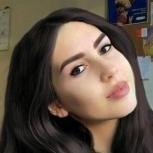

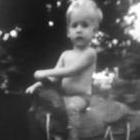

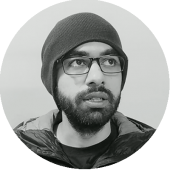
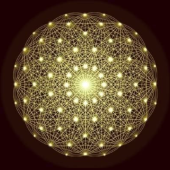
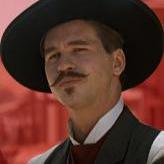
.thumb.jpg.156e8ce7a5a00e9fbb0713e9e09ffb5a.jpg)
